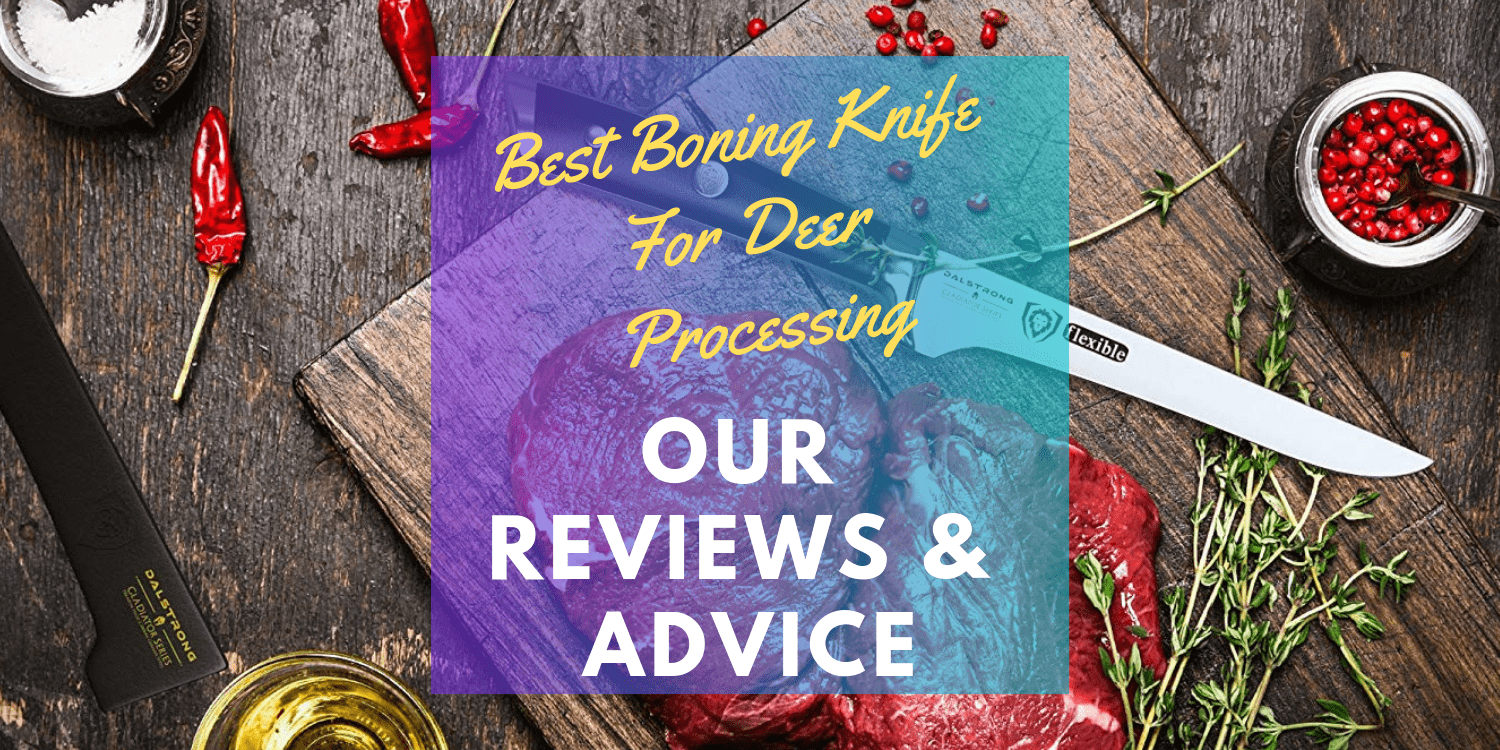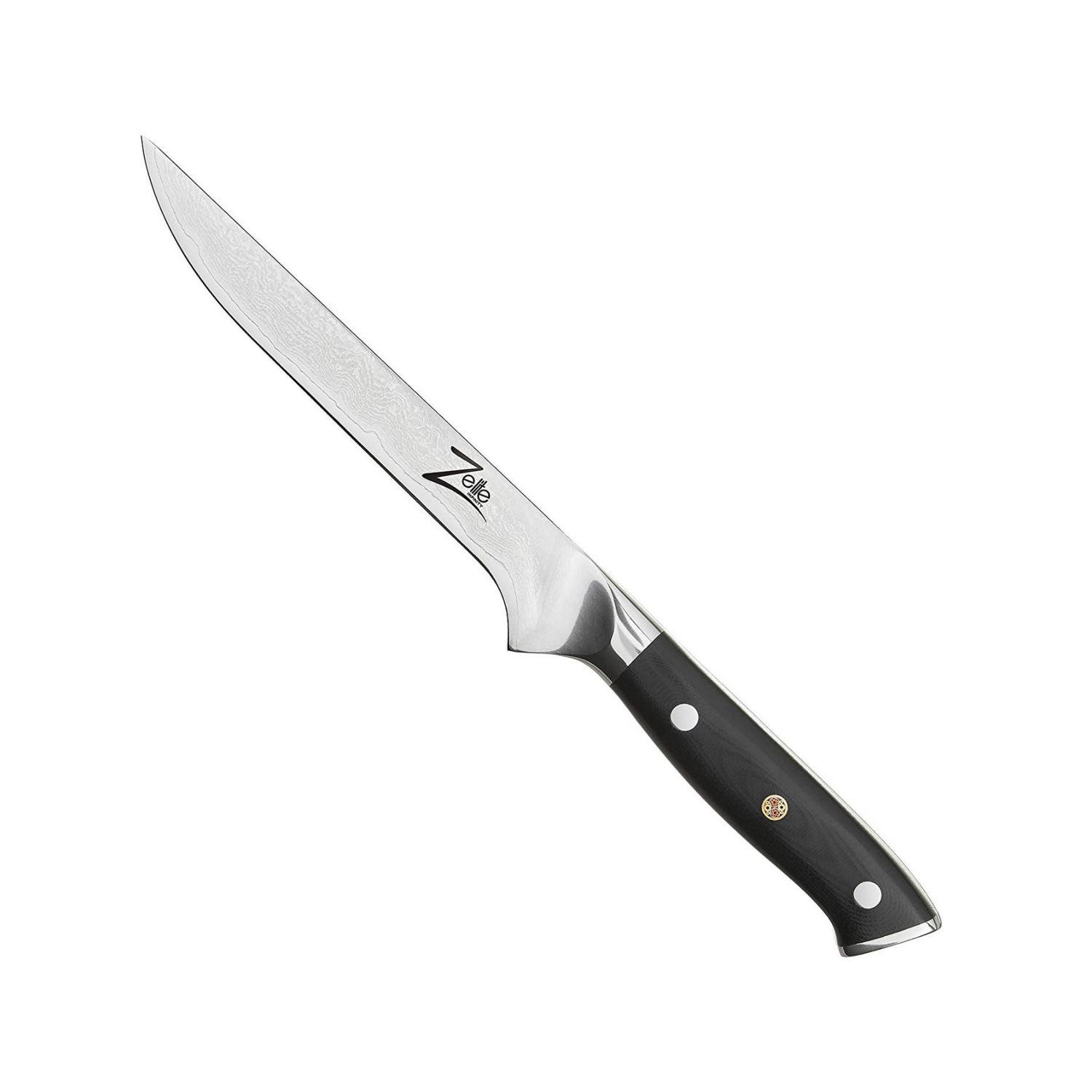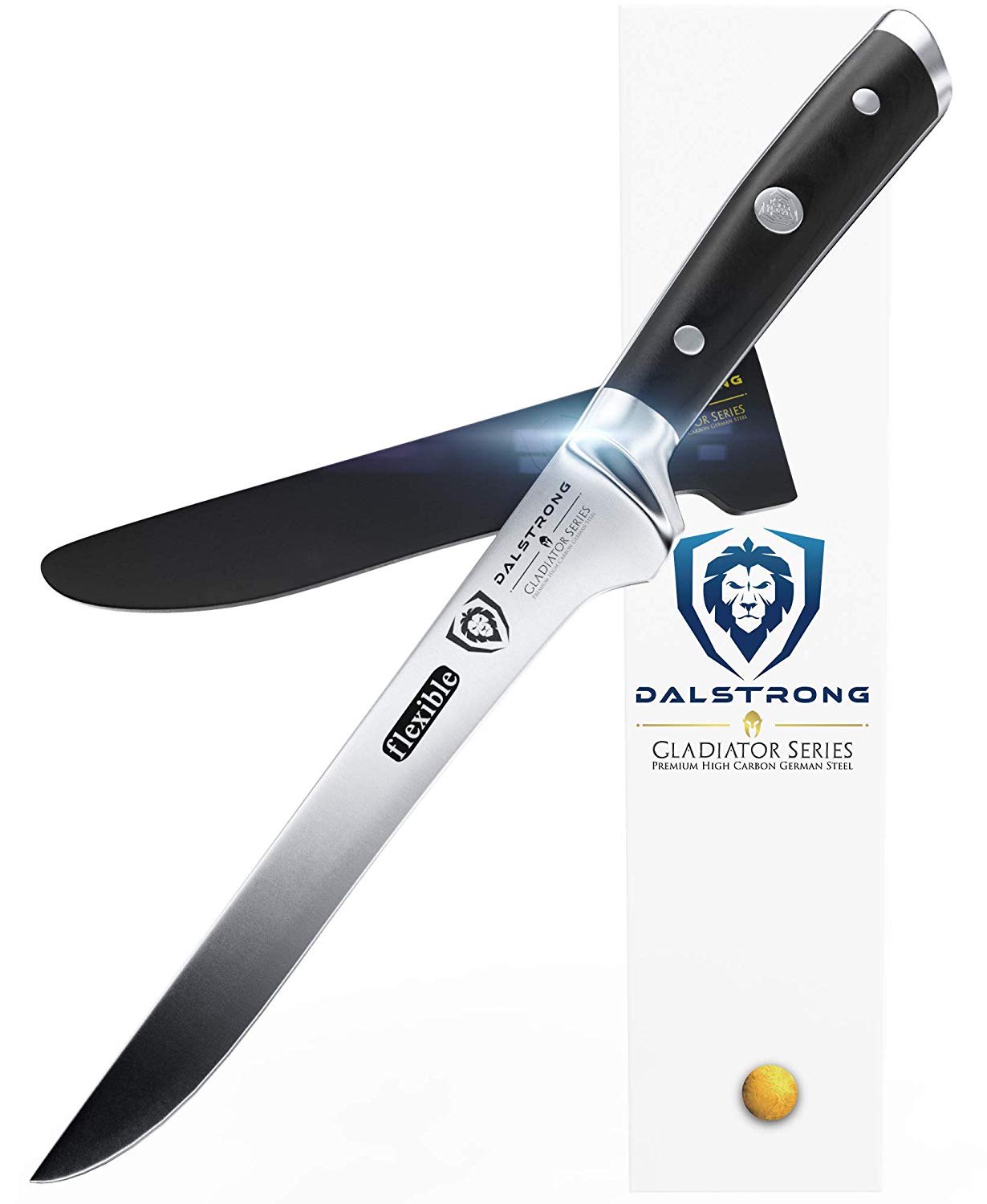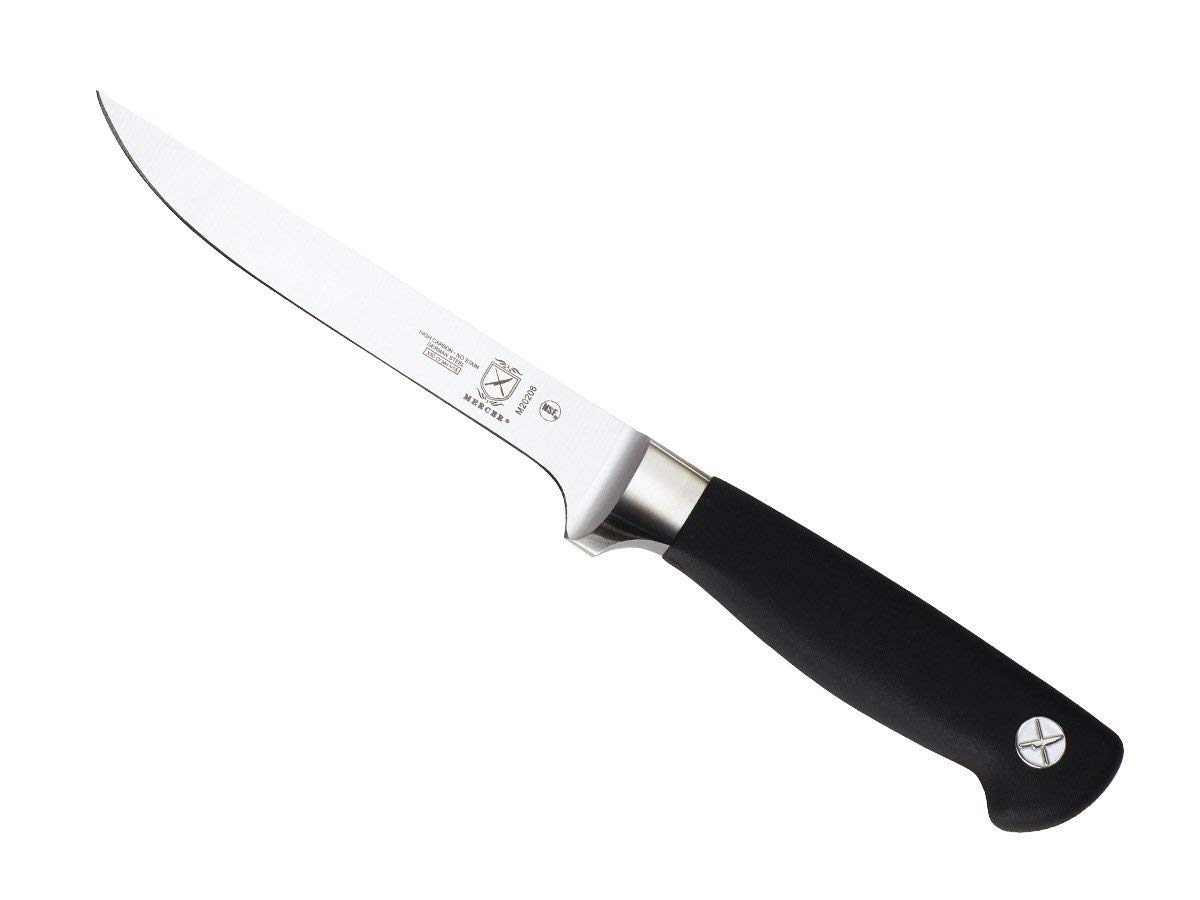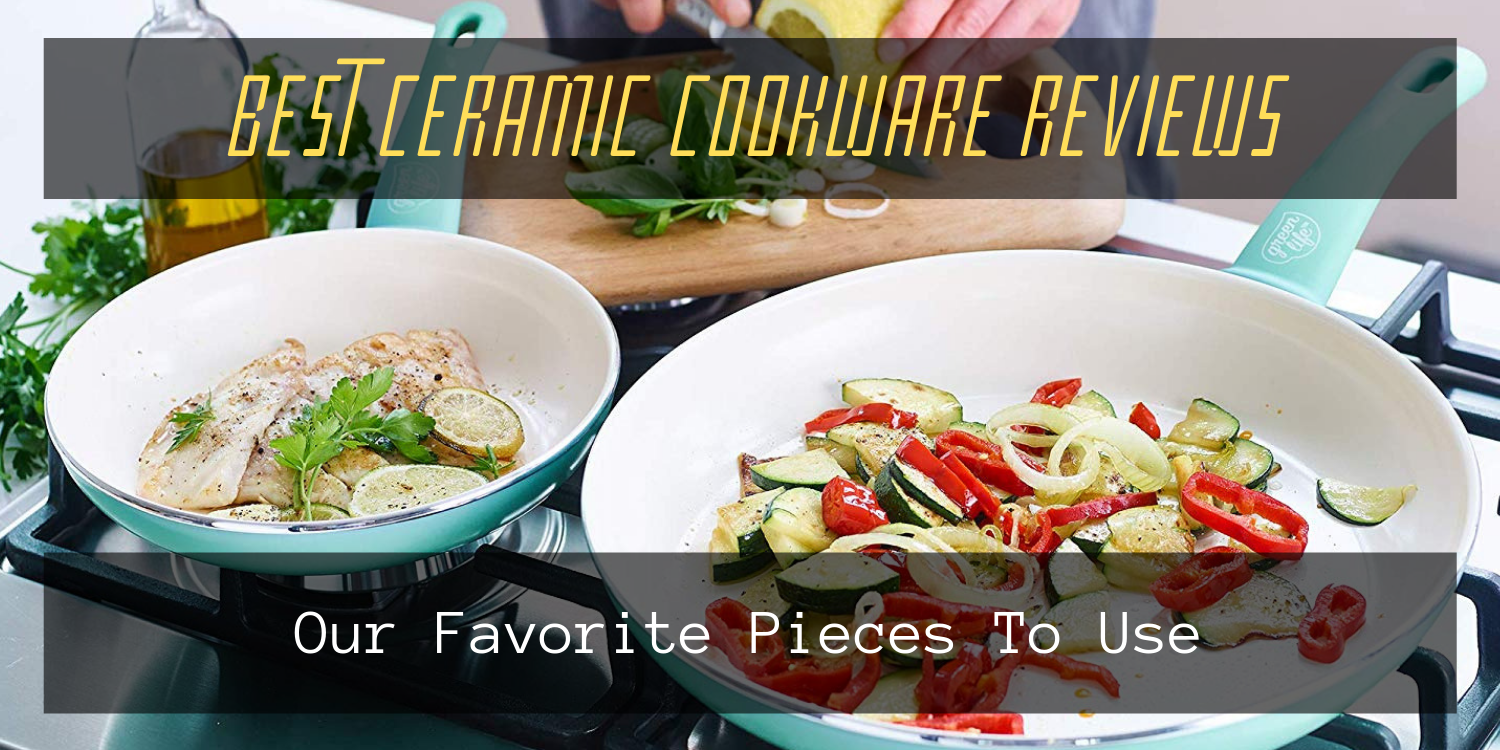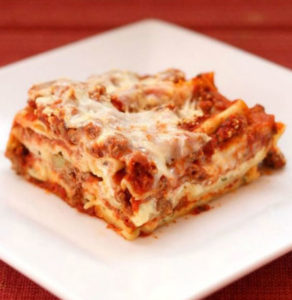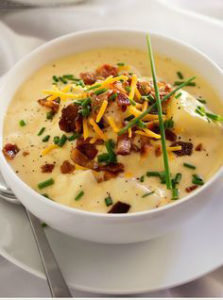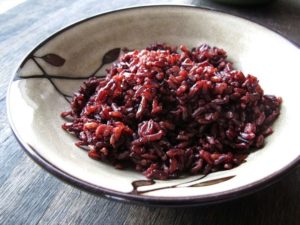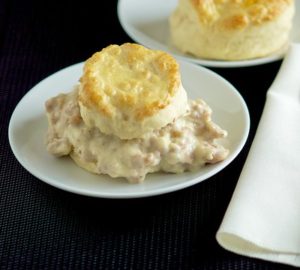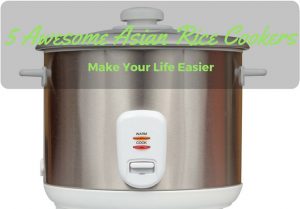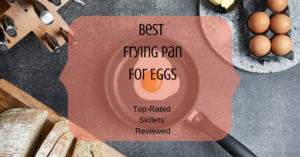Best Boning Knife For Deer Processing Our Reviews Advice
A boning knife is a lot more versatile and useful in the kitchen than many people give it credit for. It is the most efficient when it comes to separating meat from the bones. If you don’t like wasting precious meat, you definitely should invest in a good boning knife that can get the job done easily. Additionally, a boning knife also comes handy in removing flesh from chicken and fish.
This article will show you where to find the best boning knife and which features you should be on the lookout for. Check out which of the boning knives out there we highly recommend, and which ones are suitable for your specific preferences.
Quick Comparison: Top 4 Deer Processing Kinves
Product | Quality | Price | Our Rating |
|---|---|---|---|
A+ | $ | ||
A | $$ | ||
A | $ | ||
B+ | $ |
**Below, you'll find our more detailed reviews, but you can also click the links above to see current prices or read customer reviews on Amazon.
More...
Boning Knife versus Fillet Knife – What is the Difference?
Some people might confuse the functions of a boning knife and a fillet knife. But there are actually differences to them. A boning knife tends to be less flexible compared to a fillet knife. That is because fillet knives have blades that are usually thinner and more pliable. This makes the fillet knife more ideal for delicate types of meats such as fishes. The flexibility and the thinness of the blade allow the knife to get into those grooves without causing a lot of damage to the fish flesh.
Boning knives, although can be used even for more delicate meats, are better off used for meats because of its stronger metal. They are also thin – thinner than many of the kitchen knives you have – but don’t have that added flexibility. Unlike fillet knives that tend to curve upwards, the top of the boning knife is usually straight. This way, it is more effective when it comes to separating tougher meats from the bone.
There are many benefits to using a boning knife when separating the bone from tougher meats. The first is that you are more likely to remove more flesh compared to other types of knives. It makes the deboning process a lot easier as the knife glides through the meat effectively. It also prevents leaving behind big chunks of meat, leading to wastage.
Boning knives are also easier to use for such a purpose. They are handier and the blades are thinner. This will then reduce instances of slippage, which can cause injuries.
Best Deer Processing Knives Reviews
Find out more about what these boning knives can offer:
This top-of-the-line boning knife is worth the investment. From its high carbon stainless steel blade that has been forged to precision to its triple-riveted handle that enables precise control, it is hard to find anything to dislike about this product. It also features a Precision Edge Technology that allows the blade to be 20% sharper than other blades out there and has an edge retention that is two times better than competing knives. With a blade that is 58 degrees in Rockwell hardness, this has a solid build that will last you for a long time.
Pros
- It is very sharp right out of the box, so it doesn’t require extra sharpening. It also retains its sharpness for a long time.
- The material is resistant to corrosion and rusting.
- It features a full bolster and a finger guard for added safety.
- Maintenance is easier as it is dishwasher-safe.
- It grips easily. The handle is ergonomic and doesn’t slip. It is also resistant to damage because it is made from polyoxymethylene materials.
- The blade length and thickness are just right for its purpose.
- It even works on more delicate fishes.
Cons
- There are just a few issues about the blade dulling ut after a bit of use.
Made from premium Damascus Japanese steel, you can get more out of every cut and slice with this boning knife. It features a rounded handle with triple-riveted details for the most secure grip. No meat residues will stick to the surface of your blade, thanks to its tsunami rose multi-layer Damascus pattern. You can effectively work through those tougher meats without being impeded by sticky fats. Use this for years without the worry of stain and rust settling in. It is made from 33 layers of high carbon stainless steel that guarantees it will remain rust and stain-free for a long time.
Pros
- This knife is one of the sharpest out there. It has 12 degrees angle for optimum sharpness.
- The edges do not chip or get damaged easily. With its Japanese AUS10-Rockwell Hardness 61 feature, it can withstand some contact with solid bone.
- The handle is ergonomic. It is rounded, so it is easy to grip. It is also resistant to heat, moisture and even impact.
- The blade itself looks great. There is a wave pattern on it that prevents residues from sticking to its surface.
- For a blade this nice-looking and with its quality, it is one of the more affordable options out there.
Cons
- Some said they had to sharpen it first before using.
This mid-range knife is a value for your money. The craftsmanship is one of the best you can find today. Made from high-carbon German steel and has an angle of 14-16 degrees, you can be assured of superior sharpness that can cut through any kind of meat. It is also an all-around knife, thanks to its added flexibility. You can use it not just for deboning but for skinning fish as well. It can also be used for butterflying and trimming.
Pros
- The design is superb. It works in deboning fish.
- Durable and has a solid feel to it. The blade is well-made and is resistant to chipping and rusting.
- The handle is made from black pakkawood. It has a nice grip to it.
- It comes with a sheath that is BPA protective.
- The blade is also water resistant.
- It cleans easily.
Cons
- Some said it gets uncomfortable after a few minutes of usage.
This knife might be cheap, but it definitely packs a punch when it comes to features. It features Santoprene handles that are ergonomic and easy to grip even when you have wet hands. It is made from a material that even when exposed to kitchen oils, will not get damaged or break down easily. The blade is made from high-carbon and no-stain German steel that naturally resists the appearance of corrosion and rust. It also has a taper-ground edge that gives this knife more flexibility and stability.
Pros
- This is an affordable knife.
- It stays sharp even without the need to re-sharpen.
- It has a good amount of flex.
- Some customers used it for cutting vegetables as well. Since it has a good heft to it and the blades are sturdy, it can be relied on even for such a purpose.
- Has lasted many customers a long time. It seems to hold up well even against a high level of usage.
- Comes with a lifetime guarantee.
Cons
- Some said the knife has thicker handles compared to what they are used to.
Which One Should You Get?
Best Quality: Wusthof Boning Knife. This has the best build and blade features out of the others, but it has a higher price tag. That shouldn’t deter you from getting this nifty knife that has a sharpness and control great for doing the most delicate of deboning tasks. It truly is a workhorse in the kitchen.
Easy to Clean Up: Zelite Infinity Alpha Royal Series Boning Knife. We recommend this one if you don’t want to spend so much time cleaning and keeping your knife shiny and sharp. The waves pattern on the blade prevents residues from sticking to it. And with its Japanese engineering, it definitely will last you for a long time.
Best Flexibility: Dalstrong Gladiator Series Boning Knife. This is a mid-range boning knife with durable and sharp blades. One of its best features is its flexibility that allows it to work even on more delicate meats. It is also affordable but not too cheap that you will doubt its durability and quality.
Best Price: Mercer Culinary Genesis Forged Flexible Boning Knife. Get this knife if you are looking for something that won’t break the bank. Although it is more affordable, it still delivers a lot when it comes to quality and sharpness.
Factors to Consider When Finding the Best Boning Knife
When it comes to choosing the best boning knife, here are the factors you need to consider:
Blade Sharpness. It is very obvious why you need to buy a boning knife that is sharp and easy to sharpen. When deboning, your knife should be as sharp as possible to efficiently cut through even the toughest of meat. Otherwise, you will just tear into the flesh or even end up hurting your hands. Ideally, you would want a knife that has been pre-sharpened. The sharpening angle should be at 12-18 degrees. In the case of boning knives, the lower the sharpening angle, the better.
Size of the Blade. The size of the blade is also important. It has to be long enough to cut through thick slabs of meat. Shorter blades might require you to saw it back and forth just to separate the bone from the meat. Avoid getting one that is too long as well. If it is too long, it will be difficult to control and maneuver. The best length of boning blade is 5-6 inches.
Weight of the Handle. The best knives have a good handle and blade weight balance. If one is heavier compared to the other, handling it could become a lot more difficult. However, when it comes to boning knives, it is essential that the handle is heavier compared to the blade. That is because it allows you to have more control over the knife when working on the meat.
Bolster. This the part between the blade and the handle. One that is made from stainless steel can add more heft to the handle of the knife, which is good for maneuverability. It is also ideal to get a knife that has bolsters that flares downwards or outwards. This makes the bolster wider compared to the handle, which can prevent your hands from slipping forward from exerting pressure. This can protect you and keep your safe while working on slippery meat.
Material. Avoid getting a boning knife with blades made from ceramic. That is because this material doesn’t have a lot of flexibility and can become brittle over time. It can also become susceptible to chipping, shattering and snapping, especially when it gets in contact with bones. Go for high-carbon steel instead. It has flexibility and it is one of the most durable ones out there. It accommodates a good amount of flex as well, so you can maneuver it and use it at odd angles without worrying that it will snap.
Handles. The handles are what will help you get the job done efficiently. That said, it should be ergonomic enough to have a nice grip. It should also have non-slip features for safety. A textured or contoured handle is also better because it allows for maximum grip.
Price. Last but not the least, check the price. While you definitely would want to get something that isn’t too cheap or too expensive, make sure you scrutinize all of your options. Look for one that has a good price and can justify the features that are incorporated in the knife.
If you go over these factors when looking for a good boning knife, you should be able to find the one that will last you for a long time.
What to Do Next?
Have you finally decided which boning knife to get? Let us help you find other kitchen tools as well. Check out our homepage to learn which kitchen tools are the worth buying.

